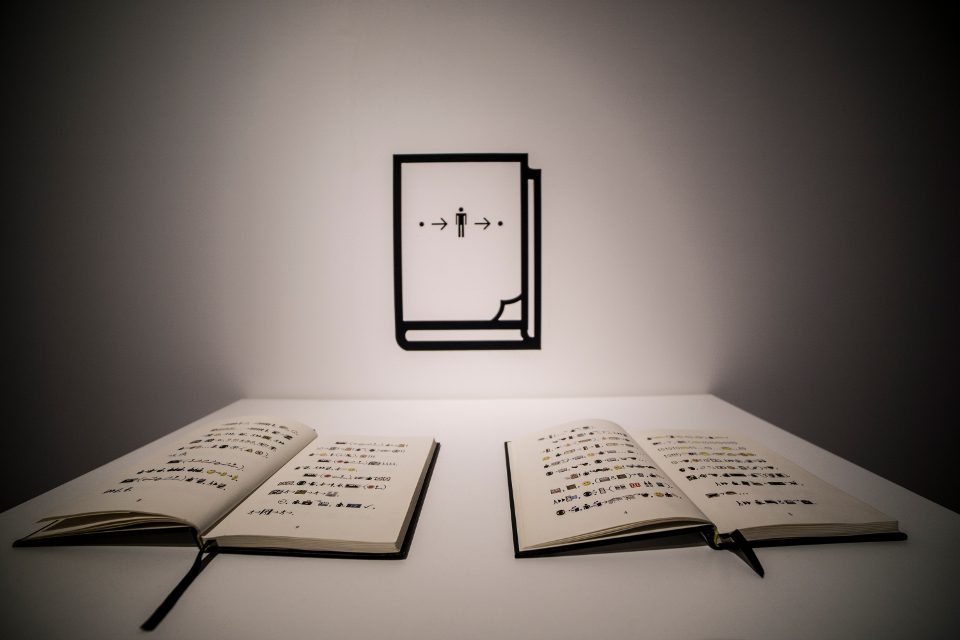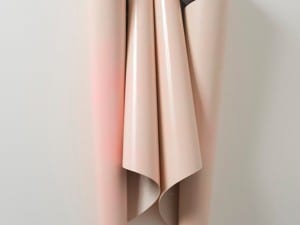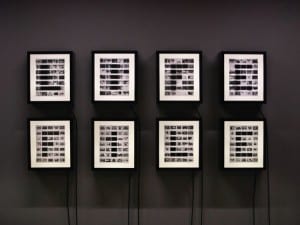Coinciding with Manchester’s Year of the Monkey celebrations, the Centre for Chinese Contemporary Art launched its 30th anniversary programme at the beginning of February. A milestone year for the city’s relationship with China, 2016 sees the CFCCA stage an extensive six month line-up of exhibitions and special events. Running into the month of June, the programme features new collaborations with 30 prestigious artists, curators and academics, who have each contributed to the organisation at various stages of its 30 year history. We speak to curator Ying Tan about the CFCCA’s ongoing commitment to representing Chinese arts and culture in the UK, and learn more about the selection of artists exhibiting in 2016.
A: The Centre for Chinese Contemporary Art (CFCCA)’s 30th anniversary programme in early February. Can you give a brief overview of the artists exhibiting?
YT: The anniversary programme sees CFCCA celebrate its history and achievements over the years including the many artists it has worked with who have gone on to achieve international acclaim. Starting with Xu Bing (2015 headline artist of Venice Biennale’s China Pavillion), CFCCA will feature an installation from a different high-profile artist each month including Cao Fei, Tsang Kin-Wah, Lee Mingwei and Susan Pui San Lok.
Xu Bing was the first artist to exhibit in our current building back in 2003. His exhibition presents his ground-breaking project Book from The Ground. An artist fascinated with language and communication, Xu Bing’s project presents a novel seven years in the making, written in a “language of icons”. In our gallery we have recreated Xu Bing’s studio where he devised his universal language designed to be understood across the world. We will also be working with artists and curators who have previously undertaken residencies at CFCCA including Gordon Cheung, Yu-Chen Wang and The Temporary’s RareKind China graffiti project.
A: Over the next six months, the gallery will display an exhibition charting the timeline of CFCCA’s history. What are the key historical moments since the organisation began in 1986?
YT: The organisation’s roots began in 1986; a time in which the Chinese population in Manchester was growing at a rapid pace. At this time artist Amy Lai saw an opportunity to use art and culture to ‘bridge the gap’ between the Chinese and English communities and thus promote a positive understanding of Chinese society and identity. Thus she formed China View ’86 – the first festival of Chinese culture in the UK – and from this the ethos of CFCCA was born. One year later, the Chinese Arts Centre was founded as a registered charity and opened its doors in a converted office space on Charlotte Street in Manchester’s Chinatown. It provided the only dedicated platform for British Chinese artists to show and develop their work. The centre’s first large-scale contemporary art exhibition was Beyond the Chinese Takeaway in 1992, which represented the experiences of second and third generation British Chinese artists.
In 1996 Director Sarah Champion (now MP for Rotherham) led the centre’s relocation to Edge Street in the Northern Quarter, consolidating the centre’s desire to encourage a wider audience to engage with Chinese contemporary art and culture and cementing the organisation’s position as a contemporary art gallery. In 1999 Chinese Arts Centre programmed its first touring exhibition: Representing the People which visited four national venues and was the first independent exhibition to show artists from mainland China in the UK. In 2003 an Arts Council Lottery grant secured another venue change to our current RIBA award-winning building on Thomas Street. The new purpose-built facilities included a Gallery, unique artist-in-residence studio, library and resource space, education and events suite and teashop (now Gallery 2).
In 2013 Chinese Arts Centre rebranded as the Centre for Chinese Contemporary Art (or CFCCA). The re-brand affirmed the organisation’s position as a future-facing organisation responding to China’s growing cultural and economic influence. 2013 also saw the formation of a partnership with the University of Salford to develop a unique collection of Chinese Contemporary Art, (officially launched with CFCCA’s first co-commission, a film called Haze & Fog by artist Cao Fei who returns for our 30 year programme) and the centre hosting the launch of the Manchester China Forum, launched by Chancellor of the Excheque George Osborne. After 30 years, 3 venues, 3 name changes and 6 directors, CFCCA’s history is rich but its future is also bright. We are in an excellent position to support the cities agenda to connect with China reflecting back an interest in Chinese contemporary culture through art. As the world increases its focus and interest in China, so CFCCA’s position to support UK audiences to explore and better understand Chinese contemporary art and culture becomes more and more important.
A: CFCCA is the leading promoter of Chinese contemporary art in the UK. Can you discuss its main aims and ambitions?
YT: CFCCA is the leading authority on Chinese contemporary art in the UK and the only not for profit gallery in Europe that explores and showcases Chinese contemporary art. The centre has always had big ambitions and is always looking for ways to expand its reach and impact. Over the next few years, CFCCA will grow its position as a centre of knowledge and research through formation of its own Asia Research Institute for Arts and Media. A talent development network for arts professionals working within the field will look to expand knowledge of working with the subject matter while continued high profile projects with key visual arts partners across the UK such as Liverpool Biennial and Tate will continue to expand our reach beyond the walls of the centre and satisfy our ultimate aim to attract new audiences to explore Chinese contemporary art.
A: The organisation has developed a strong reputation as a centre for research. How does this research benefit regional, national and international audiences, artists and others?
YT: There is still much to say and write about Chinese contemporary art as compared to the canons of Western art history it is still very young in its development. Also with China becoming a growing global force many people are demanding a better understanding of art, culture and society in China. Part of CFCCAs role is to not just showcase Chinese contemporary artists but to promote research, writing and conversation around the subject to increase knowledge and understanding and support visitors to overcome some of the barriers they may face. In 2016, CFCCA will launch an Asia Research Institute for Arts and Media that when complete will make available a reference library, archive and our collection of Chinese contemporary art.
A: The CFCCA has introduced a series of events including Thursday Lates. In your opinion why are sessions such as these important? What can visitors look forward to?
YT: CFCCA believes strongly in providing people with as much access as possible to engage, interact and respond to Chinese contemporary culture. This year we will introducing our Thursday Lates running on the first Thursday of each month to tie in with Manchester’s wider evening offer across the city’s museums and galleries. This is a move to get more people to connect with galleries by offering an evening alternative outside of regular working hours. By coinciding with other gallery evening openings it helps present the city’s cultural offer as a unified one. On these evenings we will be offering free curatorial tours in which people can find out more in depth information about the artists and contexts of the work.
The other series of regular events we will be offering are our A Window On… talks on the final Wednesday of each month delivered by guest speakers from academic institutions and other arts organsiations. Informative and accessible, these talks are tailored to give new audiences an entry into understanding Chinese contemporary art and its historical and social significance. By offering these sessions we are hoping to help break down perceived barriers for audiences who are unfamiliar with Chinese contemporary culture.
30 Years of CFCCA, Centre for Chinese Contemporary Arts, Market Buildings, Thomas St, Northern Quarter, Manchester, M4 1EU.
Find out more: www.cfcca.org.uk.
Follow us on Twitter @AestheticaMag for the latest news in contemporary art and culture.
Credits
1. Xu Bing, Book from the Ground. Photo: Arthur Siuksta. Courtesy of CFCCA.





